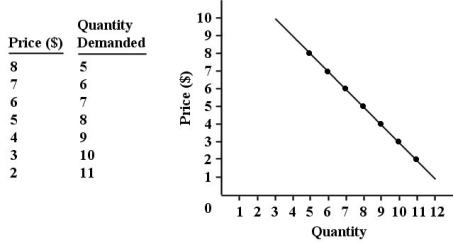The figure below shows the demand schedule and demand curve for a product produced by a single-price monopolist.  FIGURE 10-1
FIGURE 10-1
-Refer to Figure 10-1.Suppose this single-price monopolist is initially selling 9 units at $4 each and then reduces the price of the product to $3.By making this change,the firm is giving up revenue of ________ on the original number of units sold and gaining revenue of ________ on the additional units sold.Its marginal revenue is therefore ________.(All figures are dollars)
Definitions:
Random Assignment
A method used in experiments that randomly allocates participants to different groups in order to eliminate bias and ensure the groups are comparable.
Cognitive-affective Units
Concepts in psychology that represent the mental processes and emotional patterns that are closely linked and influence an individual's reactions to the world.
Self-regulatory Plans
Strategies developed by individuals to control their behavior, emotions, and thoughts toward achieving personal goals.
Encodings
In psychology, encodings refer to the process by which we perceive, process, and store information in memory.
Q13: Which of the following statements about single-price
Q14: Compared with perfect competition,monopolistic competition results in<br>A)a
Q16: In Canada,the Competition Act specifies that in
Q20: Which of the following assumptions about perfectly
Q31: Suppose that capital costs $100 per unit
Q37: Refer to Figure 7-1.Total product is increasing
Q56: A firm in a perfectly competitive market<br>A)has
Q60: Refer to Table 9-2.If the firm is
Q82: Suppose there are only five construction companies
Q112: Refer to Figure 6-10.Suppose Chris's income is